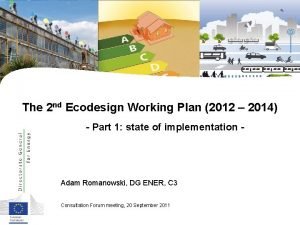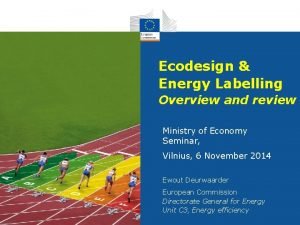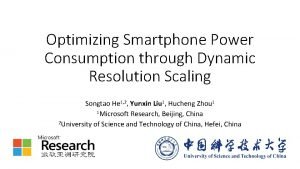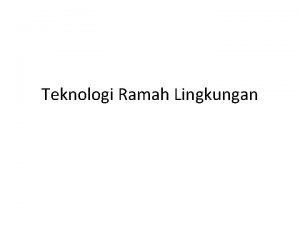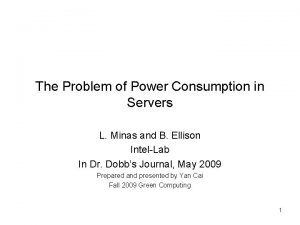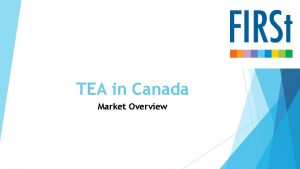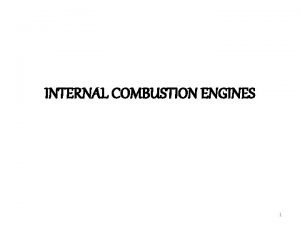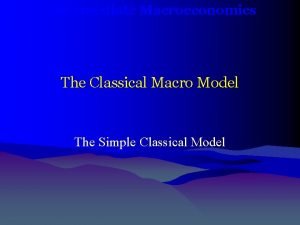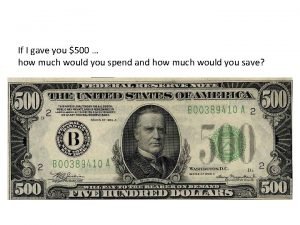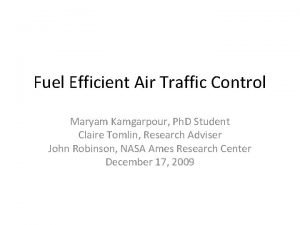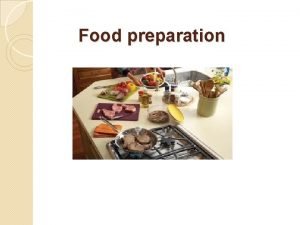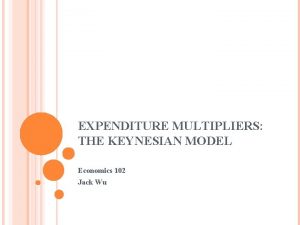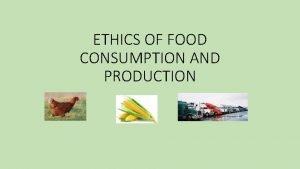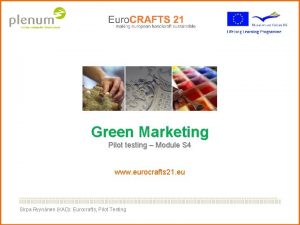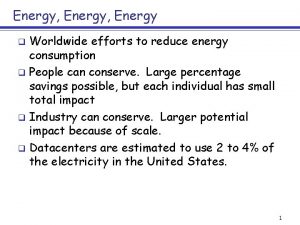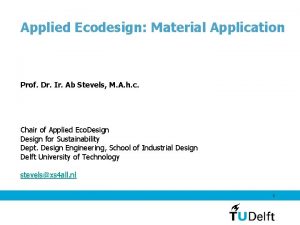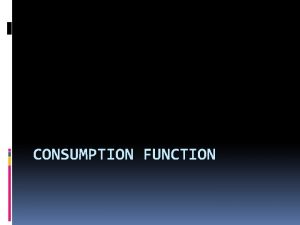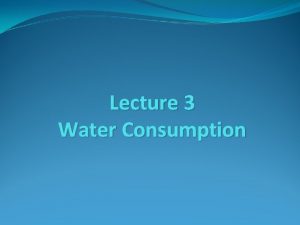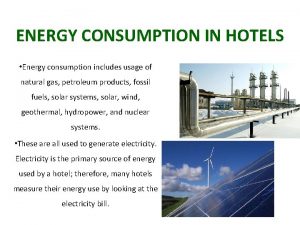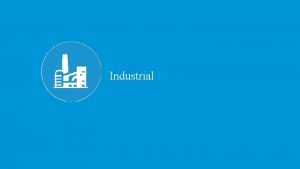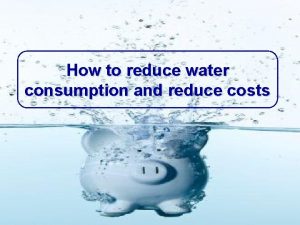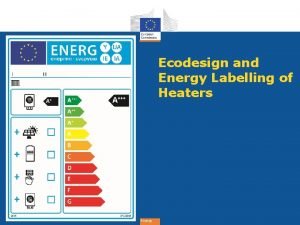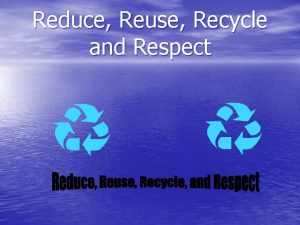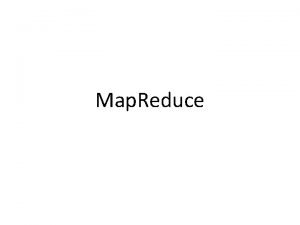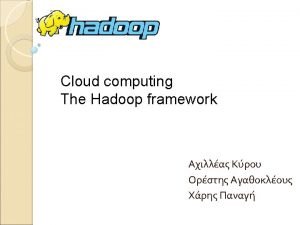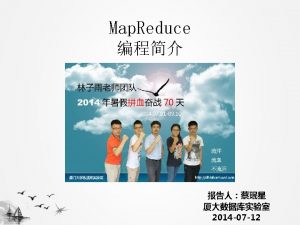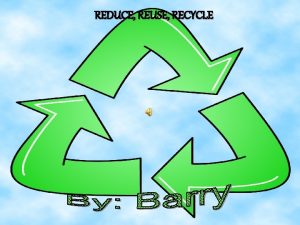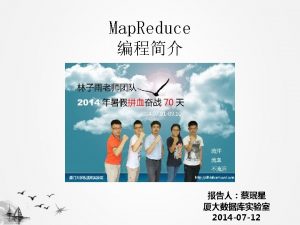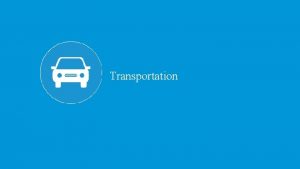Applied Ecodesign How to Reduce Energy Consumption Prof




















- Slides: 20

Applied Ecodesign How to Reduce Energy Consumption? Prof. Dr. Ir. Ab Stevels Chair of Applied Eco. Design for Sustainability Dept. Design Engineering, School of Industrial Design Delft University of Technology stevels@xs 4 all. nl 1

Outline • Why reduction of energy consumption of products? • Examples of improvement strategies • Positioning of Energy Reduction in its context • Conclusions 2

Energy in the use phase deserves much more attention Figure 1. Average environmental load of an electronic product over its life cycle. % papers in applied Eco. Design approx 10 approx 30 approx 1 approx 50 (11% to tools and methods) 3

Example of life cycle impacts of CE products (m. Pt) TV 28 inch Audio system FW 780 Portable phone DECT Manufacturing 750 500 20 Usage 3000 1200 15 60 10 <1 60 30 3 3820 1714 38 Life Cycle Stage Packaging/ transport Disposal Total 4

Role of Energy in various life cycle stages Mining, Materials production Raw material treatment, melting (“Embedded energy”) Bringing into form, function Parts, components manufacturing (“Process energy”) Assembly machines Tools, soldering, energy (“Embedded energy and process energy”) Usage energy Standby, operational (“Consumed energy”) Discarding, recycling Logistics, treatment energy (“Recuperation of embedded energy”) Transport Logistics Energy is even much more important than just the user stage 5

Why reduction of energy consumption of products? Drivers • Customer has to pay • for energy use (incl. eco-tax) • for batteries: expensive/ sometimes a nuisance • Legislation/ regulation: • it is a big environmental load • stand-by energy • power management • batteries • NGO’s/ consumer organizations • conservation of resources/ renewable energy • lower cost of ownership to consumers • energy label promotion 6

Why reduction of energy consumption of products? Enablers • Science and technology • IC development • miniaturization • Suppliers • common roadmaps • Money/ costs • less components is less cost • less heat dissipation is less repair • less wiring is less cost 7

Example of reduction opportunities Benchmark of TV sets in the On mode • • • 32”TV 29”TV 28”TV 25”TV 21”TV 14”TV +12% -1% +2% -5% +10% +20% up up up to to to 76% 42% 48% 55% 63% 100% • (Reference Philips Products in category = 100) 8

Methods to reduce energy consumption • Do energy analysis If an amount of energy is put in, how much is contributing to the function, how much is dissipated. Do this on: • product level • subassembly / PWB level • component level • Formulate green options: • Improvements • Functionality changes • Set priority 9

Example of energy analysis: Electric Oven Energy consumption by Consumption per year k. Wh Old Consumption per year k. Wh New Action taken Clock/ timer 35 9 Design for clock/ timer with low power Pre heating elements 10 4 More effective pre heating cycles Heating elements 42 34 Change geometry less on/off Lamp 3 2 Replace lamp by low watt, better positioning Losses 4 2 Better insulation Total 94 51 10

Examples of improvements: Green TV • Eliminate superfluous components due to design history (15% reduction in case of green TV) • Integration of electronics (one chip TV) • Check for each component in chassis power consumption and go for alternatives (additional 15% reduction in case of green TV) • Minimise cable and wiring between subassemblies 11

Examples of improvements: joint supplierproducer roadmaps for IC’s 12

Examples: Functionality Changes • Power management e. g. Energy Star for monitors • 0. 1 W Stand-by power devices (various TV) • Eco-knob (various TV) either on/off or automatic adjustment • Addition of on-off switch (audio) 13

Examples: Applying different physics • LCD versus CRT display • factor 3 -4 energy reduction (overcompensates) for higher manufacturing energy. Gap will increase (learning curve). Application of LEDs will bring further reduction • Portable products • human powered • solar powered • Fuel cell powered • At Delft University there is a lot of research on energy issues of (portable) products 14

The battery issue • Almost everyone hates them: • Inconvenient • out of power always a surprise • moisture sensitive • effort needed for green disposal • Costs: relatively expensive • Perceived as bad for environment (chemical content) 15

The battery issue, important strategies • Strategy 1: Lower energy consumption of portable products • Strategy 2: Change to rechargeable batteries (example Audio: most leading brands did it) • Strategy 3: Apply solar cells in/ without a combination with batteries • Strategy 4: Human powered products (example: Portable radio). 16

Positioning of Energy Reduction in its context, I Aspect Positive Negative Functionality Utility products like washing machines; job done for less money Fun products like TV: loss of ‘quality’ Internal value chain Better to sell: lower cost of ownership Increase in production costs External value chain All stakeholders like it - 17

Positioning of Energy Reduction in its context, II Aspect Positive Negative Environmental Dilemma’s Energy consumption mostly dominant in life cycle impact - Eco. Design Matrix Relative high environmental gains Feasibility often difficult Design Process Easy to quantify Most designers design in materials not in energy 18

Communication about Energy Reduction General recommendation: describe in k. Wh not in CO 2 -amounts Issues k. Wh CO 2 Understanding Everybody understands Vague/indirect notion Metrics In/dependant of country Dependant on energy mix Benefits Money Have a soft flavor Image Links with high tech Links with alternative Target setting Transparent Not transparent 19

Conclusions • Energy reduction is a number one Applied Eco. Design priority • Energy analysis! • Put Energy reduction in its context! 20
 Adam romanowski european commission
Adam romanowski european commission Ecodesign
Ecodesign Geraldine tran
Geraldine tran Dynamic resolution scaling
Dynamic resolution scaling Tujuan teknologi ramah lingkungan
Tujuan teknologi ramah lingkungan Energy energy transfer and general energy analysis
Energy energy transfer and general energy analysis Energy energy transfer and general energy analysis
Energy energy transfer and general energy analysis World tea consumption
World tea consumption Server power consumption
Server power consumption Canadian tea market overview
Canadian tea market overview Water consumption water meter reading worksheet
Water consumption water meter reading worksheet Protein complementation
Protein complementation Autonomous expenditure formula
Autonomous expenditure formula Ic engine performance parameters
Ic engine performance parameters Keynesian consumption function
Keynesian consumption function Consumption function formula
Consumption function formula Maryam kamgarpour
Maryam kamgarpour Culinary preparations meaning
Culinary preparations meaning Consumption expenditures formula
Consumption expenditures formula Ethics of food production and consumption
Ethics of food production and consumption Food consumption score interpretation
Food consumption score interpretation
